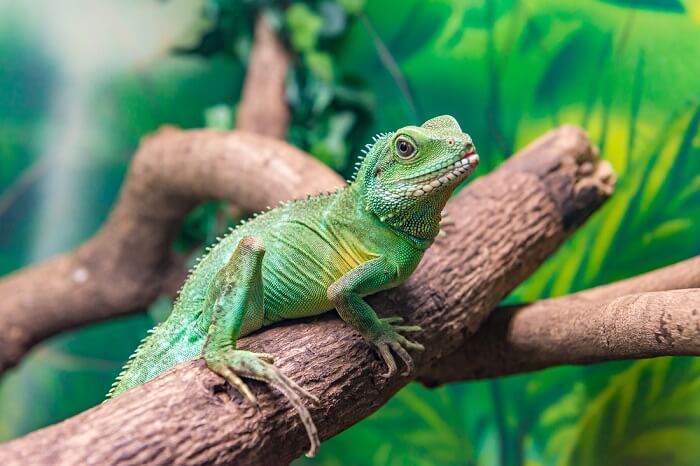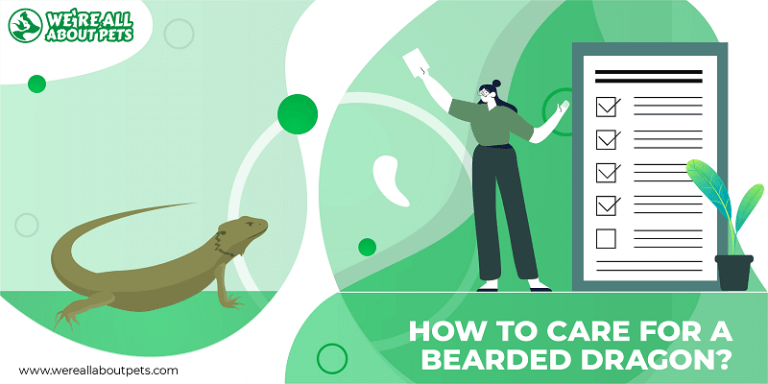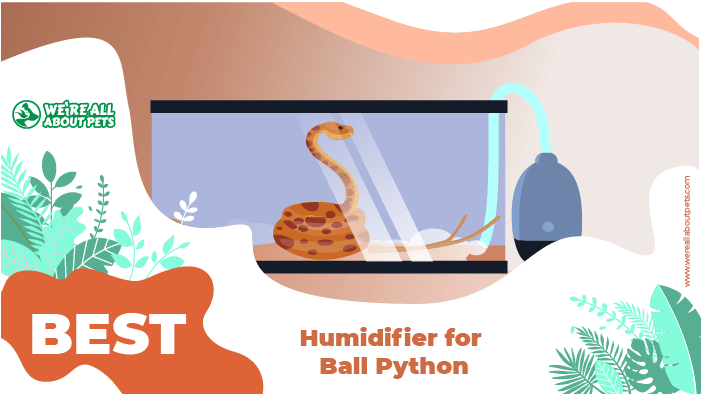White’s Tree Frog As A Pet: Lifespan, Care And Diet
This page contains affiliate links. We may earn money or products from the companies mentioned in this post through our independently chosen links, which earn us a commission. Learn More
White’s tree frogs can make good pets and they have a beautiful green color and some of the most good-looking eyes in the animal world. You may also see them called Dumpy frogs. In terms of care, they are an easy to medium level of difficulty for amphibians. This article will help you understand their special needs and decide if they’re the right pet for you.
Care
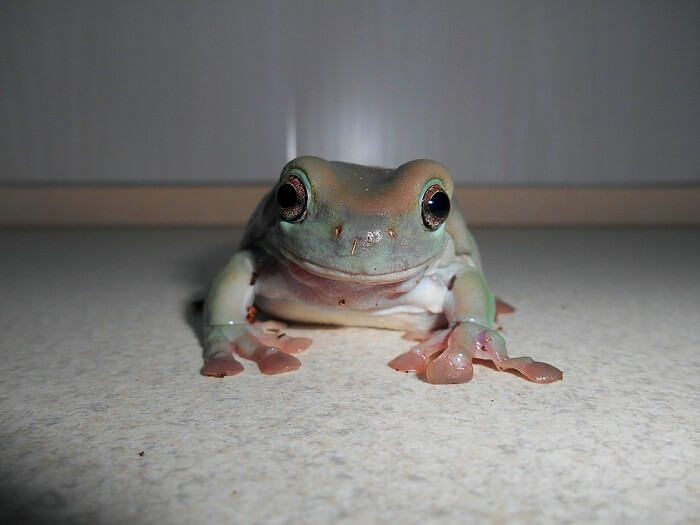
The care of an amphibian includes a number of considerations. They include providing the proper temperature, lighting, humidity, substrate, cage size, and the proper diet. White’s tree frogs can live 10-15 years in captivity with good care.
Good care creates conditions close to what they encounter in the wild, since they’re well adapted to that world. In the case of White’s tree frogs, their wild habitats are in eastern Australia, Indonesia and New Guinea.
It’s important to choose a captive-bred animal for your pet. White’s tree frogs are easily bred in captivity and getting them that way supports responsible pet trades. It also gives you a healthier pet that’s less likely to introduce parasites or infectious diseases to other amphibians in your home.
To learn more about White’s tree frogs’ wild habitats and conservation concerns, see here.
Cage Size
Adult White’s tree frogs can be 3-5 inches long, with females being larger than males. As their name implies, they’re tree-dwelling (arboreal) animals, so the cage should be taller than it is wide to allow vertical movement.
The cage should be the equivalent of at least a 20-gallon aquarium, but a larger cage is needed for more than one frog to avoid territorial stress and competition.
Substrate
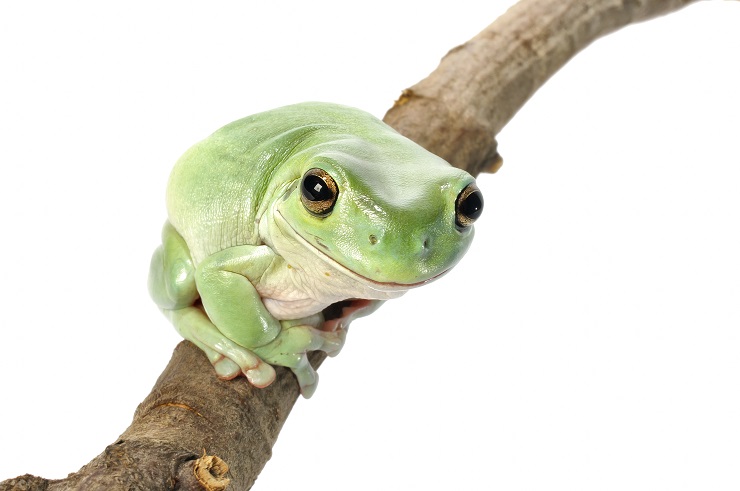
Enclosures need substrates that promote natural behaviors for the best conditions. For the bottom of the cage, use 2-3 inches of coconut fiber. On top of the coconut fiber, a thin layer of sphagnum moss helps to maintain the high humidity required in the enclosure. Change the moss regularly to avoid the growth of mold.
In the vertical space, provide branches for climbing. Try to select the smoothest branches possible to avoid irritation to their delicate skin. Moss and plant matter can be added to the branches to help keep humidity levels up and provide hiding areas for security.
The branches need to extend the vertical space all the way to the basking area. Live plants are best for maintaining a healthy habitat, but if you’re not good at keeping plants alive, then use artificial plants. Provide enough material for hiding in order to help your frog feel secure.
In order to find a link for acquiring coconut fiber, see our article about the best substrates and beddings for ball pythons.
Temperature
Enclosures should have a temperature range between 75 and 85 F, with a gradient that allows temperature control by movement. Much higher than that temperature range can cause heat stress.
A heat lamp can provide the needed heat source, but make sure that the lamp is placed in a way that doesn’t allow your frog to have direct contact. To have good control of the temperature you can use a thermostat. See our article for more information on the best thermostats for reptiles.
Lighting
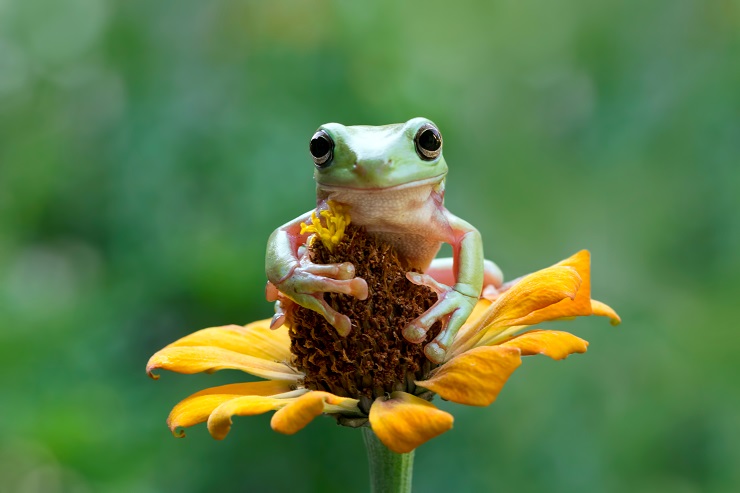
You should provide some type of light that’s on a regular timer for 12 hours to help maintain a normal cycle for your pet. Right now there’s no documented need for UV lighting in this species, but that may change with new research, so keep checking into the recommended care.
Humidity
The humidity requirement for the enclosure is high: 60-70%. Be sure to use a hygrometer so that you know the accurate humidity in the enclosure. In order to maintain that level of humidity in most enclosures, it’s highly recommended to use a misting system. For more information on humidifiers, check out our article on the best humidifiers for reptiles.
With humidity at this level, it’s important to clean the cage regularly and change substrate to avoid the growth of molds and bacteria that can cause respiratory and skin disease. With amphibians, it’s important to use water that’s treated to remove chlorine, chloramine and other potential contaminants. Using reverse-osmosis water is another good option.
Diet
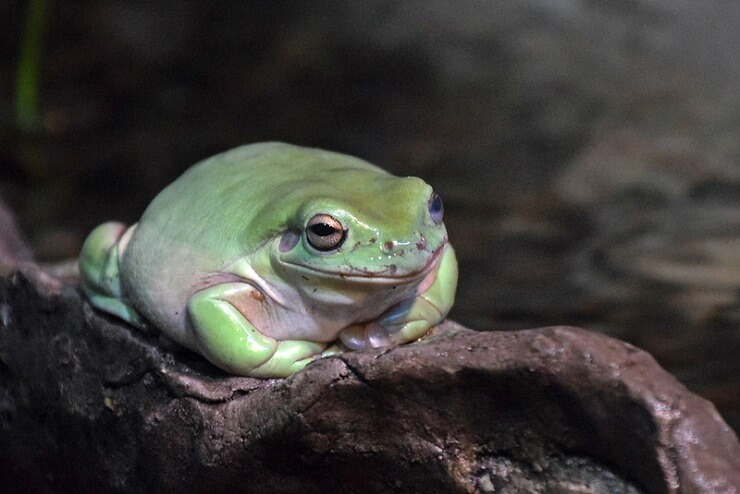
White’s tree frogs in the wild feed on insects and other small invertebrate prey items.
Never give foods designed for other animals.
What Do White’s Tree Frogs Eat?
Mealworms, crickets, Phoenix worms and Dubia roaches are all good choices for food items. Feed good quality vegetables and a calcium supplement for several days prior to being offered. Additionally, dust with a calcium supplement (without D3) when you feed them to your pet.
Insects and worms have higher phosphorus than calcium, and the dusting gets that back to a positive ratio that’s important for proper utilization of calcium. Replace the calcium supplement with a multi-vitamin supplement weekly.
The vitamin supplement may contain D3. Also, check to make sure the vitamin supplement has pre-formed vitamin A (not vitamin A as beta carotene). Young animals should be fed daily, but as the frog matures and growth slows, the insects should be offered 3-4 times per week.
Provide water in the enclosure and make sure it’s cleaned and replaced daily. Ensure the drinking water is free of contaminants, just like mentioned for the humidifier above. For good enrichment, a system that recirculates the water into a waterfall or rain feature is a great addition to the enclosure.
Temperament
White’s tree frogs don’t enjoy being handled and it causes them stress. Additionally, their skin is very sensitive and permeable. Oils from your skin cause damage to them easily. Toxins on your hands, like nicotine on a smoker’s hands, cause serious health problems for frogs.
Health Concerns
All amphibians should be seen regularly by a veterinarian. The most common health concerns that you may see include:
- Nutritional deficiencies
- Fungal or bacterial skin infections
- Obesity
- Trauma
- Parasites
- Metabolic diseases
- Ingestion of objects that cause obstruction
It’s also good to get an annual health exam for your frogs. If you need to find an experienced reptile and amphibian veterinarian, start your search here.
Summary
White’s tree frogs can be great pets for someone willing to make the commitment to the care they require. This article should provide you the information you need to decide if they’re right for you.
Frequently Asked Questions
Can White’s tree frogs live alone?
Yes, they do fine on their own. If more than one is kept, they definitely need their personal space- 20 gallons of space per frog.
Are White’s tree frogs poisonous?
No, the skin secretions that they have are harmless to humans. In fact, they have been used in pharmaceutical research due to antiviral and antibacterial properties. https://www.hindawi.com/journals/ijg/2018/8158453/.
What size tank does a white tree frog need?
For one frog you should provide at least a 20-gallon vertical tank. More than one can be kept, but they need a great deal of space.
Is a white tree frog a good pet?
As long as you have the right expectations, yes. They’re not hard to care for and they are fun to watch, but if you’re looking for a pet that comes out to be handled, then consider another pet.
How big do white tree frogs get?
White's tree frogs are considered quite large, they range in length from 2.5 to 4.8 inches. Females tend to be slightly bigger than the males.

